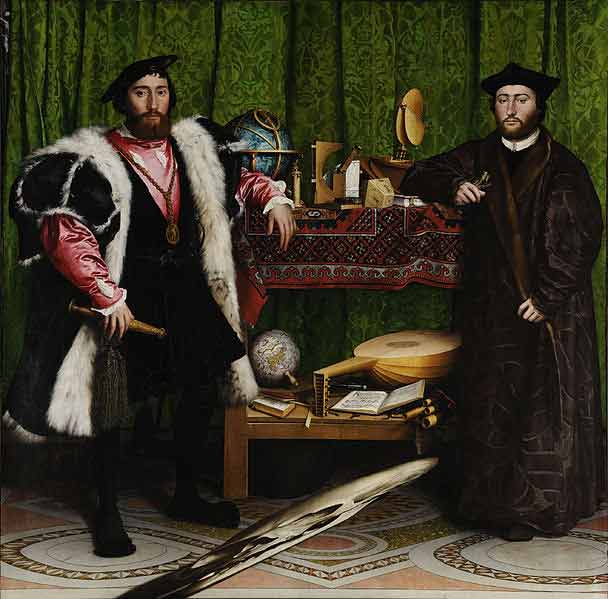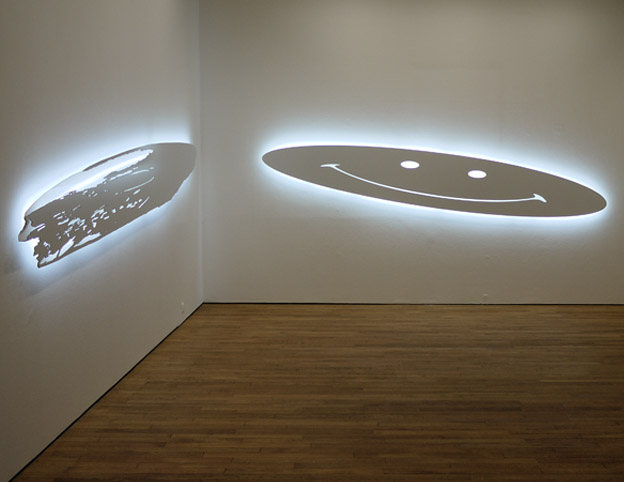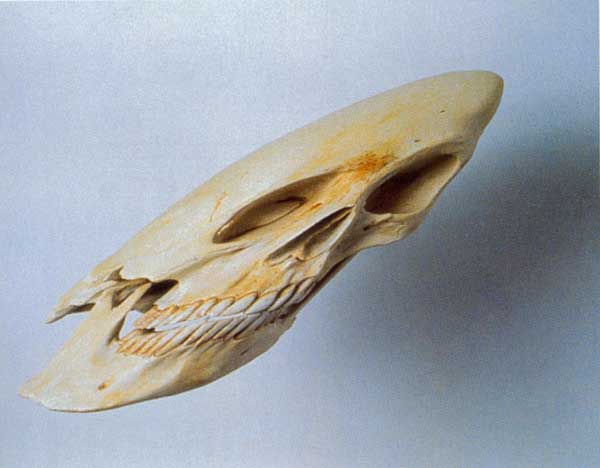Learn from the OLD MASTERS
Learn from the OLD MASTERS
The Ambassadors (1533) is a painting by Hans Holbein the Younger in the National Gallery, London. As well as being a double portrait, the painting contains a still life of several meticulously rendered objects, the meaning of which is the cause of much debate. It is also a much-cited example of anamorphosis in painting.
The most notable and famous of Holbein’s symbols in the work, is the skewed skull which is placed in the bottom centre of the composition. The skull, rendered in anamorphic perspective, another invention of the Early Renaissance, is meant to be a visual puzzle as the viewer must approach the painting nearly from the side to see the form morph into an accurate rendering of a human skull. While the skull is evidently intended as a vanitas or memento mori, it is unclear why Holbein gave it such prominence in this painting. One possibility is that this painting represents three levels: the heavens (as portrayed by the astrolabe and other objects on the upper shelf), the living world (as evidenced by books and a musical instrument on the lower shelf), and death (signified by the skull).
It has also been hypothesized that the painting is meant to hang in a stairwell, so that a person walking up the stairs from the painting’s right (viewer’s left) would be startled by the appearance of the skull. A further possibility is that Holbein simply wished to show off his ability with the technique in order to secure future commissions. Artists often incorporated skulls as a reminder of mortality, or at the very least, death. Holbein may have intended the skulls (one as a gray slash and the other as a medallion on Jean de Dinteville’s hat) and the crucifixion in the corner to encourage contemplation of one’s impending death and the resurrection.





This Post Has 0 Comments